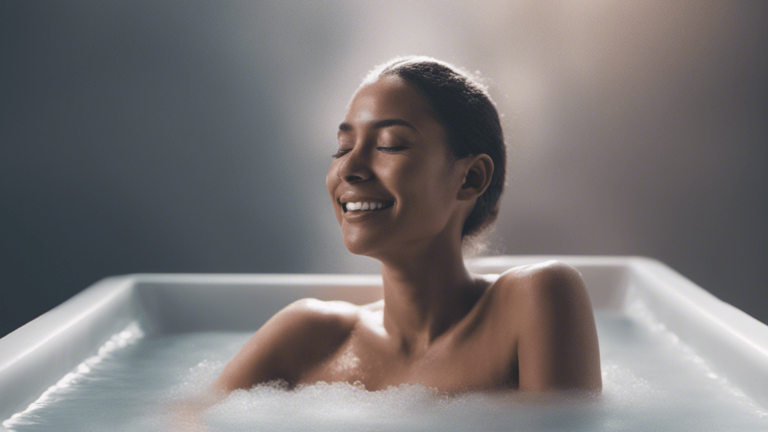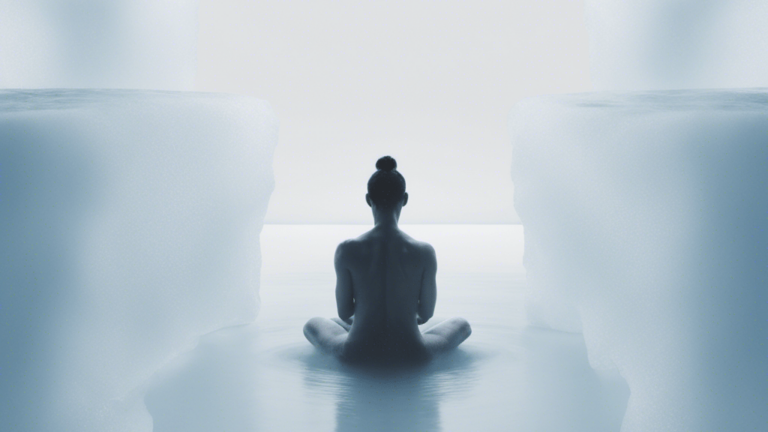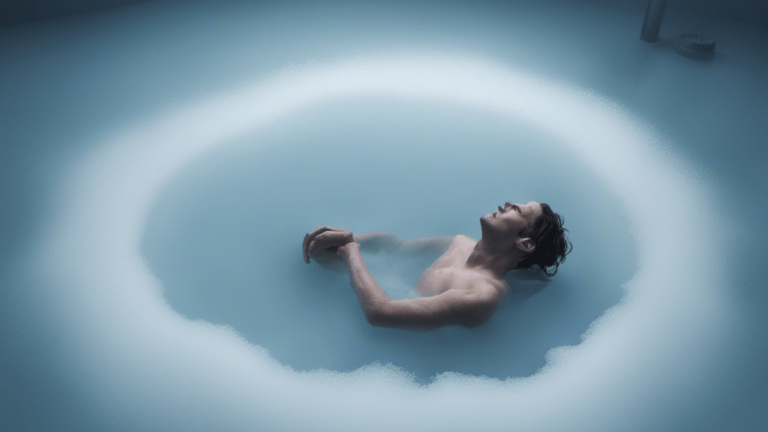The Pros and Cons of Ice Baths: A Balanced View
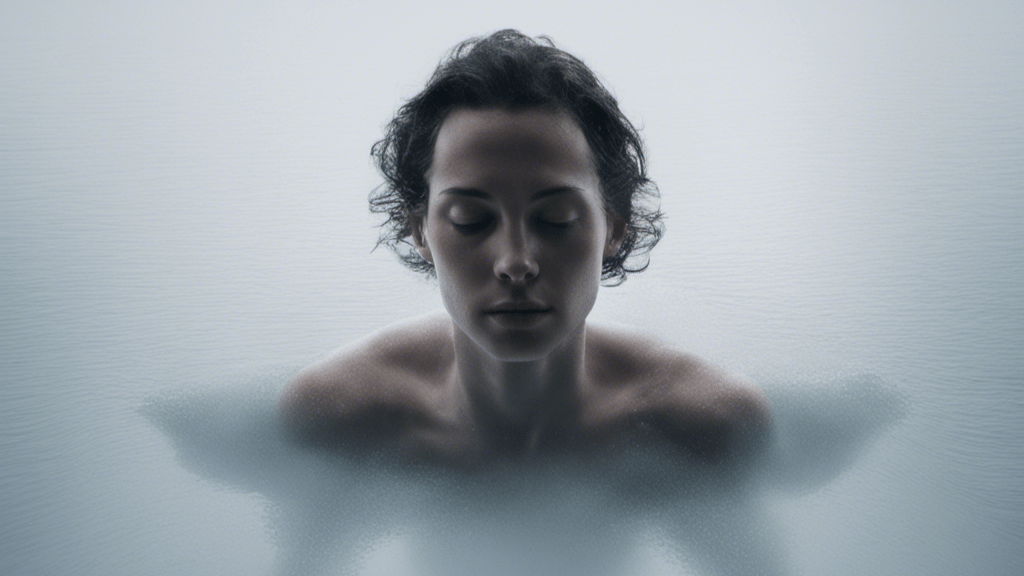
Ice baths have become a hot topic among athletes and wellness enthusiasts, celebrated for their potential to speed up recovery and boost performance. But like any popular trend, looking at the pros and cons before jumping in is important. What are the benefits of ice baths? How do ice baths affect the body? What is the science behind these wellness claims?
Advocates of ice baths highlight their ability to reduce muscle soreness and inflammation, claiming that cold temperatures help constrict blood vessels and flush out metabolic waste from the muscles, leading to quicker recovery times and improved workout performance. However, critics point out that the evidence supporting these benefits is mixed. What’s more, the intense cold can be uncomfortable and even risky for individuals with certain health conditions.
Here is a balanced view of ice baths and cold plunges to help you better understand the pros and cons of this wellness trend.
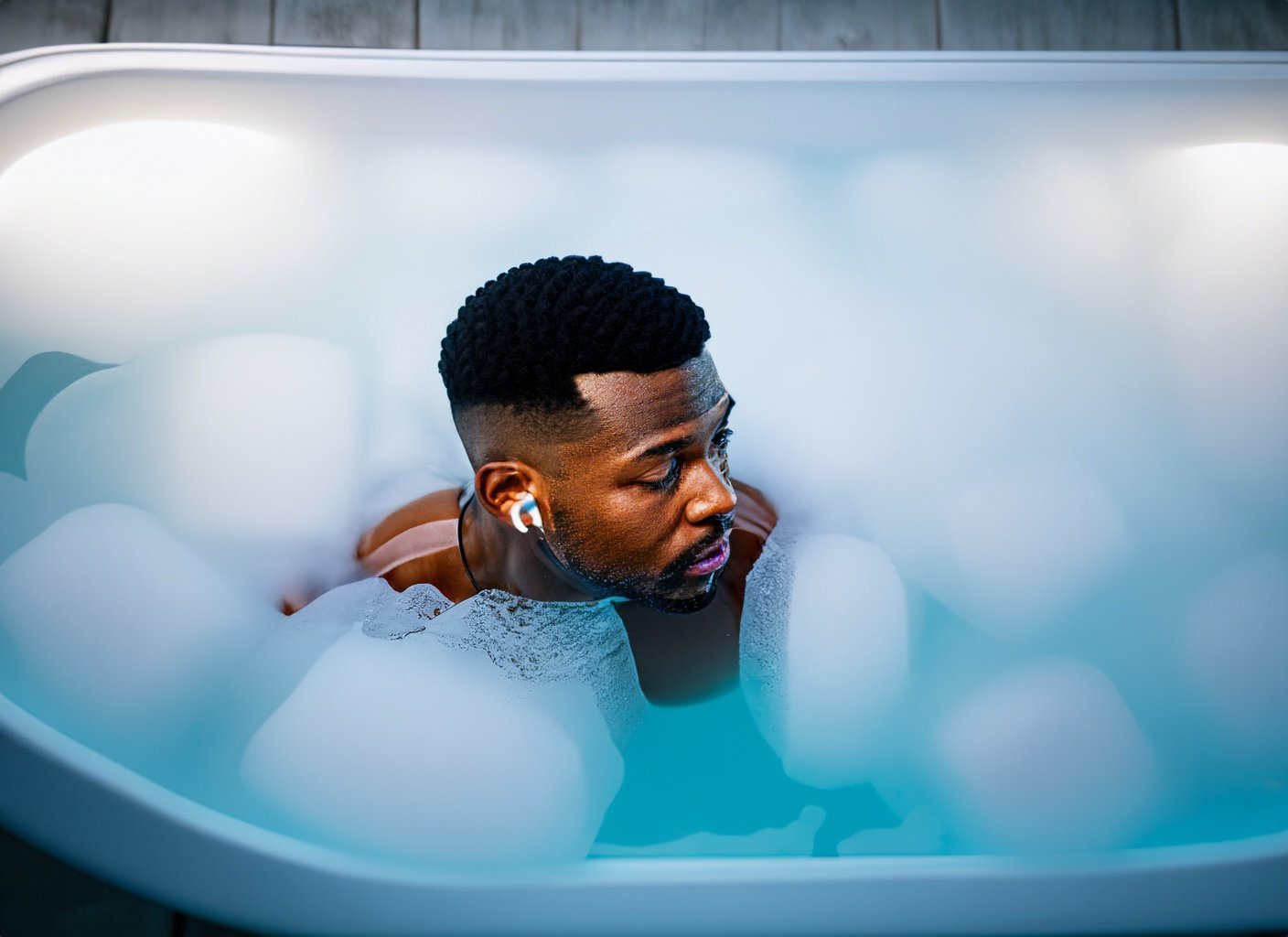
Benefits of Ice Baths
While the first plunge into an ice bath might shock the system, many people swear that the benefits of a cold plunge far outweigh the discomfort. The benefits include physical effects, psychological perks, and recovery and performance enhancement for athletes.
Physical Benefits
One of cold baths’ most celebrated health benefits centers on its impressive physical impact.
Improved Circulation
Stepping in cold water causes blood vessels to constrict, pushing blood toward vital organs such as the brain, heart, and lungs. Once you step out of the bath and warm up, blood vessels relax, allowing blood to flow normally again. This natural response improves cardiovascular health and organ function.
Relief From Muscle Soreness
For those embarking on rigorous exercise regimes or manual labor, the relief from muscle soreness after an ice bath can be a real game-changer. Cold water therapy is widely recognized as a potent means of alleviating Delayed Onset Muscle Soreness (DOMS), helping the body bounce back faster and with fewer physical complaints.
Boosted Immune System
Another fascinating aspect of making ice baths a ritual is their potential to boost your immune system. The short, intense cold exposure triggers responses in your body, like increasing white blood cell count. Some people believe this helps strengthen your defenses against illnesses.
Psychological Benefits
Ice baths offer more than just physical benefits. They have a positive impact on your mental well-being, which is something that’s often overlooked.
Increased Mental Clarity
Dipping into icy water is as much about mental toughness as physical endurance. Facing and overcoming discomfort can improve mental clarity and concentration, facilitating a more mindful state of being.
The intense cold acts as a mental reset, clearing the fog of daily distractions and sharpening one’s focus. The intense cold acts like a mental reset button, sweeping away everyday distractions and sharpening your focus. This heightened state of mind is the body’s natural response to extreme cold and forces the brain to focus on what’s essential and let go of unnecessary thoughts. In essence, the ice bath fortifies the body and refines the mind, offering a unique pathway to mental rejuvenation.
Stress Reduction
In addition to enhancing mindfulness, ice baths trigger the release of endorphins, the body’s natural “happy” chemicals. This can significantly reduce stress levels, offering a well-rounded approach to maintaining emotional balance.
Enhanced Mood
With stress reduction and the flood of endorphins comes a noticeable uptick in mood. Users often report feeling more positive, energized, and motivated after a cold soak—a natural pick-me-up without the side effects of stimulants.
The enhanced mood is not just a fleeting sensation. It’s a tangible benefit that has lasting effects throughout the day. The invigorating shock of a cold plunge not only awakens the senses but activates the production of mood-enhancing neurotransmitters. This leads to a heightened sense of well-being, increased optimism, and a positive outlook on life. For many, this mood boost is a natural antidote to the blues, making cold soaks a therapeutic ritual for both the body and the mind.
Recovery and Performance Benefits for Athletes
For athletes, incorporating post-workout ice baths into their routines improves their performance and recovery.
Faster Recovery Time
Athletes’ training regimens demand efficient recovery practices. Ice baths offer an effective solution to reducing downtime and speeding up recovery. After intense workouts or competitions, muscles can become inflamed and sore. Cold water helps constrict blood vessels, reducing inflammation and swelling. This alleviates muscle pain and allows athletes to bounce back quicker, ensuring they’re ready for their next challenge.
Reduction in Inflammation
Studies show that ice baths reduce inflammation using vasoconstriction. Inflammation, a natural reaction to injury or strain, can cause prolonged discomfort and impair performance. Without proper time for recovery, inflammation can cause serious complications. By boosting the body’s natural repair processes, athletes stay in top shape.

Potential Downsides or Risks of Ice Baths
While the benefits of ice baths are appealing, it’s essential to consider the potential downsides and risks of cold water therapy.
Physical Risks
The physical benefits of ice baths are undeniable, but it’s equally vital to be aware of the possible physical risks accompanying this practice.
Potential for Hypothermia
Immersing yourself in very cold water increases the risk of hypothermia, mainly if you stay in the ice bath longer than recommended. This can cause shivering, a rapid heartbeat, and, in severe cases, confusion and loss of consciousness.
Vasoconstriction and Possible Cardiovascular Stress
Although vasoconstriction improves circulation, it can also stress the cardiovascular system, especially in individuals with pre-existing heart conditions. If you have any heart-related health concerns, it’s crucial to consult a medical professional before beginning ice baths. Always prioritize safety and personal health considerations when exploring new therapeutic methods.
Unintended Muscular Tension or Damage
In some cases, extreme cold can cause unintended muscle tension or damage. While cold water therapy can aid post-workout recovery, incorrect usage could further exacerbate muscle strains or injuries.
Psychological Risks
Handling extreme cold is as much a psychological challenge as it is a physical one, and it’s important not to overlook the possible mental hurdles.
Anxiety or Stress from Cold Exposure
For many, the thought of plunging into icy water can trigger stress or anxiety. If not managed, ice baths might contribute to overall stress rather than reduce it.
Potential Discomfort or Pain During Sessions
It’s essential to listen to your body during an ice bath. Pain during a cold bath can signal you are pushing your body too hard.
Risk of Dependency
While the invigorating endorphin rush after an ice bath can be beneficial, like any other wellness practice that triggers significant physiological responses, there’s a risk of developing a dependency on this feeling.
Special Considerations for Certain Demographics
It’s crucial to remember that not everyone experiences ice baths the same. Certain groups need to take special precautions for their health and safety.
Pre-existing Conditions
Those with pre-existing conditions such as Raynaud’s disease, heart conditions, or nerve sensitivity should consult their healthcare provider before beginning cold water therapy practices.
Pregnancy
Pregnant individuals or those trying to conceive should approach ice baths with caution. The extreme cold can potentially affect fetal development and fertility. It’s advised to consult a healthcare provider to understand the risk-benefit balance.

Key Research Findings
As with any wellness trend, understanding the science behind the benefits of ice baths is crucial. Exploring these practices and recognizing the need for personalization in your wellness journey is essential.
Current Scientific Understanding & Limitations
While anecdotes of ice bath benefits are widespread, they are subjective. This is why it’s essential to closely examine what scientific research reveals and where ice bath limitations lie.
Highlighted Studies Supporting Benefits
Many studies have reported positive outcomes associated with ice baths, particularly regarding inflammation reduction and physical recovery. For instance, a 2022 study in Sports Medicine shows that cold water immersion is a highly effective tool for post-intense workout recovery. Additionally, a 2023 study published in Frontiers of Physiology concluded that ice baths significantly reduce muscle soreness after exercise in general, not just intense workouts.
Highlighted Studies Cautioning Risks
Conversely, some research cautions against potential risks and downsides of the practice. A study in the Journal of Physiology suggested that ice baths might impair the muscle’s ability to rebuild and strengthen over time due to decreasing muscle protein creation. While this study was conducted on “recreational athletes,” this may detract from performance in the long run. These findings indicate the need for further research on regular ice baths’ long-term and short-term impact.
Comparative Analysis: Ice Baths vs Other Practices
When contemplating including ice baths in your wellness routine, it’s worth comparing them to similar practices or alternatives.
Scientific and Anecdotal Comparison
Comparing the scientific and anecdotal evidence for ice baths with practices like heat therapy, compression garments, or foam rolling can offer nuanced insight into which may better serve your needs. For example, while cold water therapy has touted benefits for recovery and inflammation, heat therapy might be a preferred alternative for those seeking to enhance flexibility.
Cost and Accessibility Comparison
Ice baths, while generally more accessible than some practices like cryotherapy, still require resources such as ice, a cold tub, or a cold plunge tub. Comparing the cost, resources needed, and accessibility can help you decide what fits best within your budget.
Personal Preferences and Comfort Considerations
Your comfort is a crucial factor to consider. An ice bath, no matter how beneficial it might be, will serve little purpose if you find it too uncomfortable and stressful. The best therapeutic practices are always the ones that you commit to doing.
Importance of Personalized Approach
Regardless of scientific and anecdotal evidence, it’s vital to remember that health and wellness are highly individual.
Individual Tolerance Levels
People have varying thresholds for pain, spicy foods, or physical exertion, but the same applies to cold tolerance. Some individuals can endure prolonged periods in icy waters with minimal discomfort, while others may experience intense shivering or discomfort within seconds. Recognizing and respecting one’s cold tolerance threshold is crucial. Pushing beyond one’s limits can lead to potential health risks.
Varying Results
The beauty of ice baths is that they aren’t a one-size-fits-all solution. Not everyone’s body reacts to cold exposure in the same way. Factors such as body composition, age, overall health, and personal tolerance levels to cold significantly affect how you respond to ice bathing routines. It’s crucial to listen to your body, adjust according to your comfort, and consult a healthcare professional when in doubt.
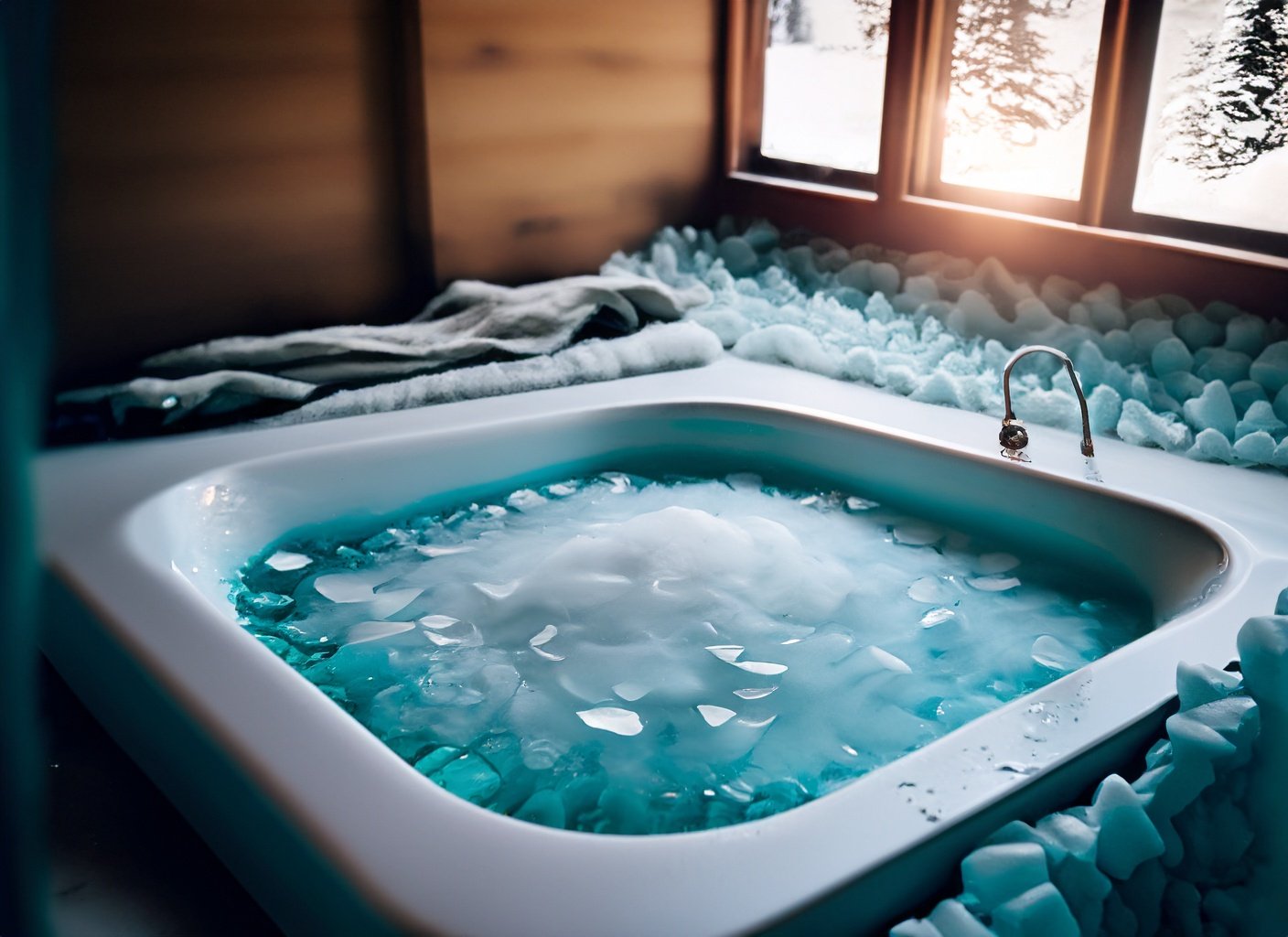
Conclusion
Ice baths have surged in popularity, bringing attention to their physical and psychological benefits. Athletes praise them for improving circulation, relieving muscle soreness, and aiding recovery, while others highlight the mental clarity, stress reduction, and enhanced mood they can offer. Despite the enthusiasm, wellness practices like ice baths vary in effectiveness from person to person, and the research presents both supportive and cautionary views, underlining the need for more scientific inquiry.
When evaluating ice baths, it’s essential to consider them alongside other recovery techniques. Always consider factors such as lifestyle, comfort level, and overall health. If you are concerned about how ice baths and cold plunges affect you, discuss this option with a medical professional. Your wellness journey is uniquely yours, and what works for one person might not for another.
Your journey to optimal health is personal, so make informed decisions that align with your needs and goals before diving into an ice tub. Embrace what enhances your well-being, and approach each wellness trend with mindfulness and care.



